NIRS and connectivity measures: an Interview with Prof. Stephane Perrey
Professor Stephane Perrey is co-author of two recently published studies where our OxyMon and OctaMon devices were used. Both studies employed measures of connectivity between different brain regions. Connectivity analyses are not yet commonplace in NIRS research and this spurred our interest to conduct an interview with Professor Perrey.
Professor Perrey is the deputy director of the EuroMov center for research on Human movement at the University of Montpellier
Could you please introduce yourself and tell us briefly about your research background?
My name is Stephane Perrey. I am currently full professor at the University of Montpellier, France, and the deputy director of the EuroMov center for research on Human movement. In the middle of my undergraduate studies I wanted to get involved in academic research as soon as possible. This led me to graduate studies in Human Movement Sciences where I went through an intense learning research experience that shaped my work. I became actively involved in scientific research in 1998 and I got my PhD in 2000 in the field of Exercise Physiology at Besançon, France, after a one-year stay in the Department of Kinesiology at the University of Waterloo. My thesis was titled Determinants of oxygen uptake kinetics in humans. In 2002, I moved to Montpellier to work with new collaborators mainly in the motor control field. At that time, I started to lead some research programs with MSc and PhD students focusing on the neurophysiological mechanisms of muscle fatigue in humans. In 2008 I obtained a five-year Institut Universitaire de France position that gave me an incredible chance to spend more research time concentrating on the brain-behavior relationships in humans. At that time, I was lucky to be funded by the Languedoc Roussillon Region and by the French Research Foundation to buy an OxyMon device. Thereafter, I launched several collaborative projects in France, Germany, and Italy and I conducted a series of first neuroimaging studies with fNIRS during various movement tasks.
When in your career did you first encounter NIRS and why did you decide to start using it?
When studying the origins of muscle fatigue during exercise in 2006, I went through several methods that could assess brain activity changes continuously over time during physical exercise. I was mainly concentrating on studying the central factors of muscle fatigue in a comprehensive way. I started my first NIRS research by looking at the prefrontal region in combination with muscle oxygenation profiles during an exhaustive cycling task. We were at that time among the first to collect cerebral and muscle oxygenation profiles during an incremental fatiguing exercise. This initial work with NIRS provided the first evidence relevant to existing models of central limitations to maximal exercise.
What are the current research interests of you and your group?
In the Neuroplasticity & Rehabilitation team I am co-leading, my current research interests are understanding the interactions between brain activity and behavior comprehensively to achieve optimal sensorimotor performance in patients and healthy people. The general goals of the team are to (i) better understand the dynamics of brain and behavior, and (ii) promote functional and brain plasticity with various cognitive-motor paradigms. Our group uses a theoretical background from the fields of physical medicine and rehabilitation, behavioral neuroscience, and neurophysiology. We use neuroimaging techniques (e.g. functional Near Infrared Spectroscopy or fMRI) with behavioral outcomes, non-invasive brain stimulation techniques (such as transcranial direct current stimulation and transcranial magnetic stimulation), and virtual reality as adjunct therapies to enhance, for instance, sensorimotor recovery after stroke. In the coming years we aim at a more comprehensive understanding of human behavior and brain processes by using relevant neuroimaging techniques applied to locomotion and physical activity in humans. This development requires collaboration with experts from Neuroimaging and Computer sciences. A representation of the brain organization with regard to the segregation of brain areas is a prerequisite for a better understanding of the relationships between brain function and behavior. A key challenge in Behavioral neuroscience, in particular for portable and promising neuroimaging techniques such as fNIRS, is to move beyond identification of regional cortical activations toward the characterization of interactions between brain areas. We tackled this problem systematically these last years by proposing connectivity analyses of the brain during prolonged motor tasks. This line of research is part of the PhD project of Gregoire Vergotte.
“My current research interests are understanding the interactions between brain activity and behavior comprehensively to achieve optimal sensorimotor performance in patients and healthy people.” ”
Has NIRS in any way shaped the research questions you pursue?
Each method has strengths, but also disadvantages. At all levels of brain research, there are gaps between the data obtained on different spatial and temporal scales. Even if NIRS offers a coarse-grained picture at the level of the whole brain, NIRS allows me to reveal cortical signatures during movement in humans. In my field using the most suitable non-invasive functional neuroimaging methods (electroencephalography, EEG and functional near infrared spectroscopy, fNIRS) with regards to motion artifacts and noise is fundamental. Recent advances in brain mapping technology should improve the capabilities of the future brain imaging devices to assess and monitor the level of adaptive cognitive-motor performance during exercise and in sports.
Could you provide us with examples where NIRS was crucial in helping you answer a research question?
Yes. I have two examples in mind where using NIRS was crucial. Ten years ago, together with Dr. Rupp, we launched a series of experiments dealing with cerebral (and muscle) oxygenation profiles during exercise. More specifically, NIRS was helpful in better describing the cerebral perturbations associated with isolated and whole-body exhaustive exercise in hypoxia and normoxia. We showed that the reduction (or plateau) in cerebral oxygenation near maximal exercise, reflects an altered central motor command, i.e. the so-called central fatigue; and all brain regions under investigation were not uniformly affected. Thereafter, together with Dr Muthalib, we moved to studying the sensorimotor cortex activation during electrical stimulation-evoked movement as well as during transcranial direct current stimulation. In this series of experiments, fNIRS represented a unique opportunity of cortical imaging since optical measurements are not affected by the electrical fields.
Now that we know where you are coming from, let us move to current events and the impetus behind this interview; the connectivity analyses used in your recent studies where you employed the OxyMon & OctaMon devices. First, let us get into some details of the connectivity analyses. Could you explain the concepts of functional and effective connectivity? How do they differ from structural connectivity?
Before explaining what connectivity is, it is important to note that the brain exhibits two types of functional organization that fNIRS can probe: functional segregation and functional integration. Functional segregation is not informative about the occurrence of connectivity between activated brain areas, whereas functional integration concerns the connections between functionally segregated areas and is defined by functional or effective connectivity.
There are different notions of connectivity between brain areas. Anatomical connectivity, which is probably the most intuitive, concerns the architectural aspects of the brain and how some brain structures (dendrites, axons) are anatomically interconnected, for example through white matter fiber bundles. Large fiber bundles in the white matter of the brain can be made visible from diffusion-weighted MRI data. But unlike the other two types of connectivity, anatomical connectivity does not provide information on the state of activation of a link at a given time or the activation dynamics of these links.
Functional connectivity refers to temporal correlations that may exist between distributed neural networks without considering the anatomical substratum. From this point of view, functional connectivity is a statistical concept that does not aim to determine the meaning of interactions between the brain structures that support these activities, nor the direct or indirect nature of these interactions. The study of functional connectivity focuses on better understanding how the brain coordinates, in space and time, the activities of distributed brain areas, following the principle of functional integration.
Effective connectivity is defined as the influence that a neural system exerts on another, either at the synaptic level or at the level of a large scale. As functional connectivity, effective connectivity concerns the overall dynamics of neuronal populations. However, it differs from functional connectivity in that an a priori model has to be defined, most often a neurobiological and causal model concerning interactions between functional structures of the brain. In a second step, this model is confronted with the experimental observations. Noteworthy is that effective connectivity gives some insight into the nature of the connections and their strengths.
When you want to assess connectivity, are there any specific considerations when it comes to data acquisition and experimental design?
Regarding experimental design, we used a prolonged continuous task when manipulating sensory feedback. In our studies, the length of the task was motivated mainly by the fractal analysis at the behavioral level. A block design with a 30-s motor task followed by 30 seconds of rest (10 repetitions) can also be used for assessing connectivity, as proposed in the fMRI field. A sampling frequency of 10 Hz or more when using fNIRS appears suitable for connectivity analysis. For sure, the current fNIRS field is lacking in research and evidence on connectivity analysis. How features of fNIRS data acquisition relate to accurate characterization of brain connectivity remains unknown.
Are there any common pitfalls when it comes to the analyses?
I would say that the specific considerations in the analysis part are located at the level of pre-processing of the fNIRS time series. In the present case, movement artifacts are a very important issue because it is one of the biggest causes of spurious connectivity. In the second study, we focused on this issue by proposing some dedicated methods. The core issue here is that spurious directional connectivity estimates can be obtained from two signals that have each been observed with different amounts of signal and noise. In other terms, estimates of Granger causality, the method of causality we used, can be corrupted by differences in signal-to-noise ratio between signals.
For filtering, we usually target a passband of interest as we do for other regular fNIRS analyses. In our lab we adopted band pass filtering (cut-off frequency, 0.009 - 0.08 or 0.1 Hz) in order to remove physiological noise like cardiac, respiratory, Mayer waves and very low frequencies. So far, we focused in the connectivity analysis only on the oxyhemoglobin fNIRS time series because they are more closely related to those in fMRI as compared to the deoxyhemoglobin counterpart. This needs to be further investigated since the signal-to-noise ratio for some experimental paradigms was found to be better for deoxyhemoglobin signals.
“Any scientific question on the reorganization of the brain after disease, as well as, e.g. trauma in sports and motor skills learning should go through connectivity measures in the future.“”
What do connectivity analyses add to “traditional methods” of analyzing data, and what types of inferences can we make based on the different connectivity measures?
In Neuroimaging, there are two main approaches: Functional localization (traditional methods looking at activated brain areas), which aims to localize in the brain a function, and functional integration, which is the study of connected processes. Methods for functional integration can be broadly divided into functional connectivity (finding statistical patterns) and effective connectivity (how regions interact). In functional connectivity analyses, there is no inference about coupling between regions; that is, it does not say how regions are coupled. However, it is useful to discover patterns (which regions are coupled), and compare patterns, especially between groups. In effective connectivity analyses, you get information on how brain regions are interacting. According to the dedicated literature, effective connectivity is able to shed light on the effect of a certain part of the brain on another part and can thus be very helpful in understanding the organization of the human brain. Our first studies belong to this line of research.
Now, let’s talk about the two recent studies you were part of that derived connectivity measures from fNIRS data. The first study used functional connectivity to look at how brain networks change when removing sensory feedback during a finger-tapping task. Could you give us a summary of this study?
Based on a simple experimental motor paradigm (finger-tapping task) this study aimed to prove the link between the multi-fractal properties at the macroscopic scale of observation (behavioral response) and the distribution of cortical networks involved in the motor task studied using fNIRS. We showed that the variety and the dynamic changes (intermittency) of the brain networks involved in the motor task and the fractal properties of tapping series evolve jointly according to the different feedback deprivation conditions. This suggests that the elimination of an increasing number of constraints imposed on the subject would require the involvement of more brain networks and greater intermittency to maintain the required level of motor performance. This signature of brain organization highlights the important adaptive capacities of humans. Dynamic functional connectivity was computed in this first study but without taking into account the information flow propagation, i.e. the directionality of the link between two brain regions of interest.
Concurrent Changes of Brain Functional Connectivity and Motor Variability When Adapting to Task Constraints by Vergotte, Perrey, Muthuraman, Janaqi and Torre. CC-BY 4.0.
The second study also used a finger tapping task but looked at effective connectivity using a novel method previously devised by one of the co-authors. Could you describe the study and this new method?
Given the limitations of our previous approach, we decided to apply a recently published method, namely time-resolved partial directed coherence (TPDC), previously applied with EEG, MEG or fMRI signals. The method was developed by Prof. Muthuraman and Dr. Anwar to better highlight the dynamic directional connectivity between brain signals from fNIRS measurements during the same type of finger-tapping task. In contrast to undirected functional connectivity, directed effective connectivity can describe the influence that one region of the brain exerts on another in both the time and frequency domains. This study allowed us to specify the direction of the link between several motor regions of interest, information that would typically be concealed using common functional undirected connectivity methods. The Granger causality we used is one such method that can find functional networks connectivity by analysis of time series recorded from different parts of the brain.
Dynamics of the human brain network revealed by time-frequency effective connectivity in fNIRS. Reprinted with permission from Stephane Perrey
Let us end this interview with a view towards the future. Do you think that you will use connectivity measures more in the future?
Definitively. The first results obtained here open a possible field of application in rehabilitation physical medicine, with a focus on patients who have suffered a stroke to explain how regional activations affect the process across the sensorimotor networks for instance. Any scientific question on the reorganization of the brain after disease, as well as, e.g. trauma in sports and motor skills learning should go through connectivity measures in the future.
Any of your previous research topics you would want to revisit using connectivity measures?
It is always difficult to revisit previous findings. Importantly, it depends on the scientific question you want to address. Behind connectivity measures, you have a strong theoretical background and your rationale has to be built accordingly. Connectivity metrics should not be viewed as an alternative to traditional outcome of fNIRS analysis (looking for an activated brain area), such as amplitude changes for a given location of the brain. We are currently working on a large fNIRS data set we have collected during the last two years. It contains data from various motor tasks, sometimes in combination with non-invasive brain stimulation techniques. We believe in the combined use of behavioral and neuroimaging analyses to highlight the possible dynamic changes between the networks as well as their functional properties to better understand the potential effects of treatments and exercise modes etc., particularly for clinical purposes.
Do you have any opinion on functional connectivity of resting state fNIRS data?
fNIRS provides a promising opportunity to explore functional interactions between segregated brain regions in the resting brain. A wealth of research has shown that human functional brain networks can be constructed using resting-state fNIRS signals. The literature suggests that a minimum of 7 min of resting-state fNIRS data acquisition is required to obtain both accurate and stable functional connectivity. However, different resting-state fNIRS durations may be used depending on the outcome of interest. Previous validated fMRI (but not only) methods should be exploited because fMRI signals are highly compatible with fNIRS signals. In summary, functional connectivity of resting state fNIRS signals is cost-effective and should be explored more with respect to specific populations and methods assessing functional connectivity.
Where do you see NIRS and connectivity analyses going in the future?
We are confident that Granger-causality based methods can be applied to fNIRS and have the potential to be a promising tool for estimating underlying functional networks of the brain during resting and motor tasks. Overall, one can be optimistic for the future as better and larger datasets, and improved analysis tools will continue to provide new insights into the brain's dynamic connectivity with fNIRS in combination with EEG. But the approaches to determine functional or effective connectivity between neural networks, along with the mathematical complexity of the corresponding time series analysis tools, need to be clarified and made accessible for end-users.
Finally, is there anything you would like to add?
fNIRS as a neuroimaging method was introduced more than two decades ago. Innovation in equipment, tools, and methods based on related-neuroimaging methods is increasing thanks to several companies and academic laboratories. The use of fNIRS in future research practices will aid in advancing modern investigations of human brain function. Connectivity measures could contribute to this achievement, and a multimodal imaging approach is likely required.
I would like to take the opportunity to thank Artinis for listening to scientists’ recommendations, and for pushing forward new ideas and R&D works for the fNIRS community.
“
We would like to thank Professor Perrey for taking the time to let us interview him. You can find more information about him and his research here.
References
Vergotte, G., Perrey, S., Muthuraman, M., Janaqi, S., & Torre, K. (2018). Concurrent Changes of Brain Functional Connectivity and Motor Variability When Adapting to Task Constraints. Frontiers in Physiology, 9. https://doi.org/10.3389/fphys.2018.00909
Vergotte, G., Torre, K., Chirumamilla, V. C., Anwar, A. R., Groppa, S., Perrey, S., & Muthuraman, M. (2017). Dynamics of the human brain network revealed by time-frequency effective connectivity in fNIRS. Biomedical Optics Express, 8(11), 5326. https://doi.org/10.1364/BOE.8.005326





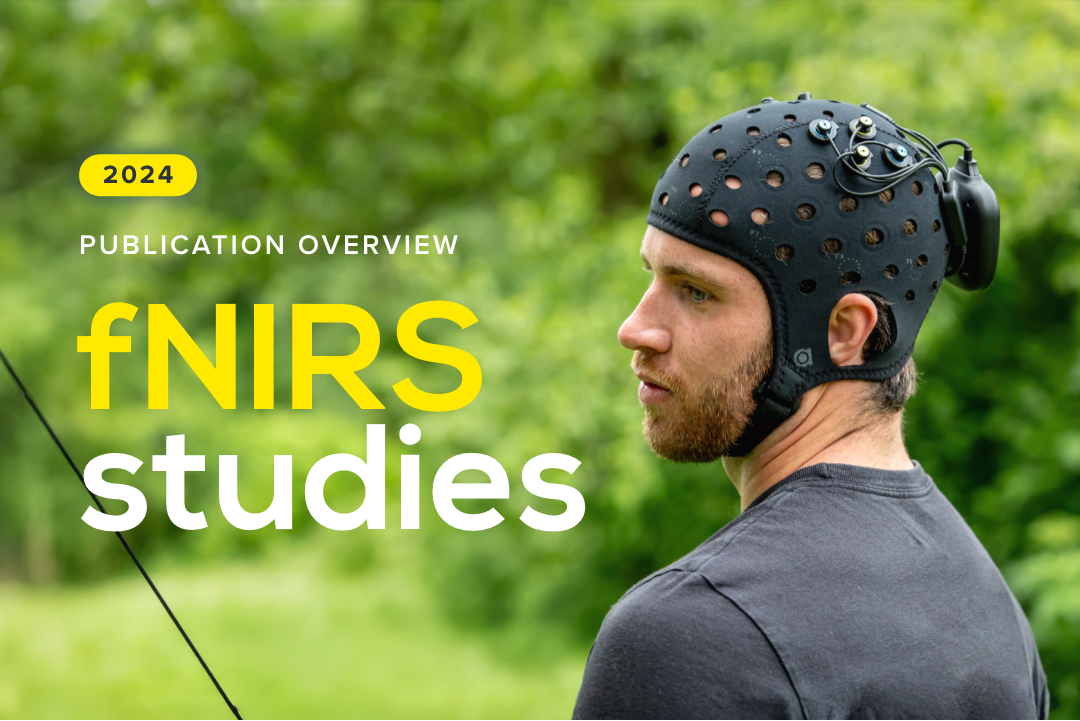
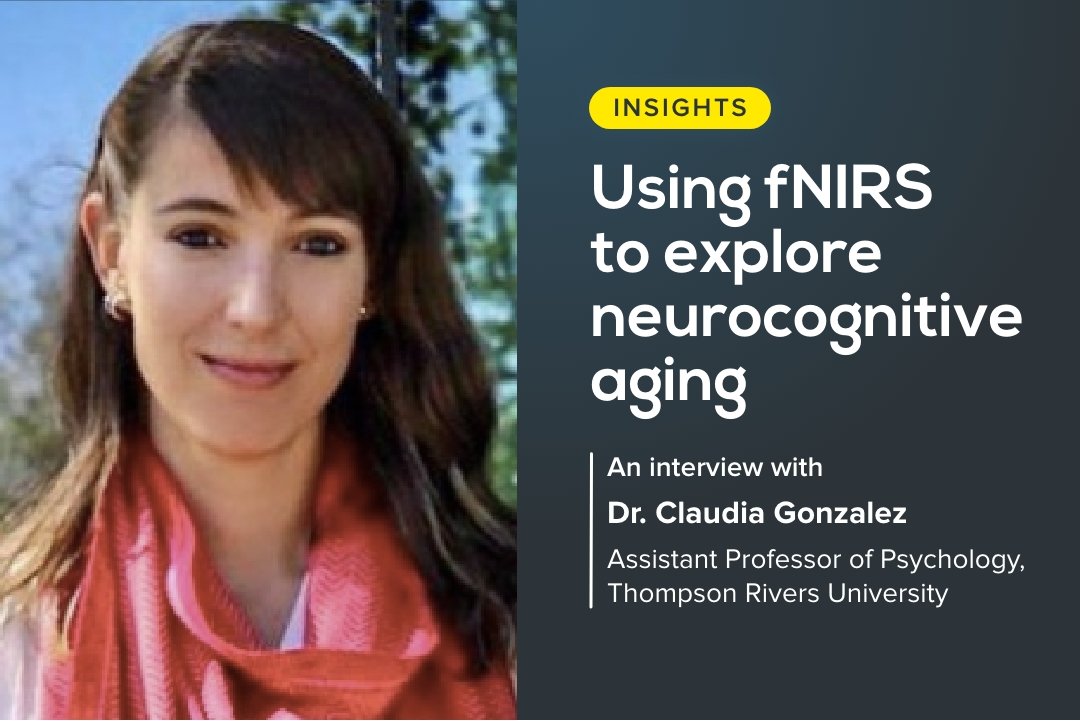
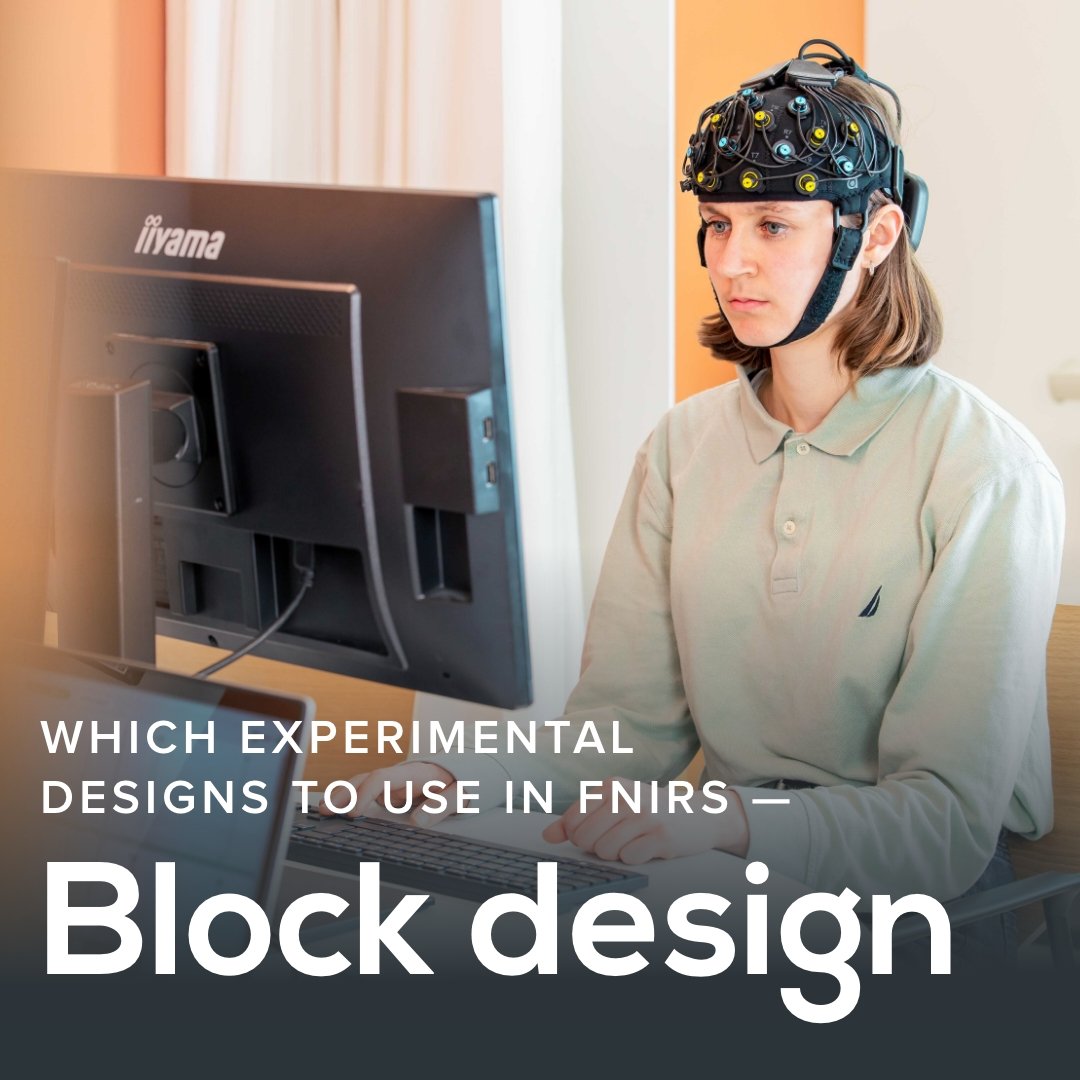
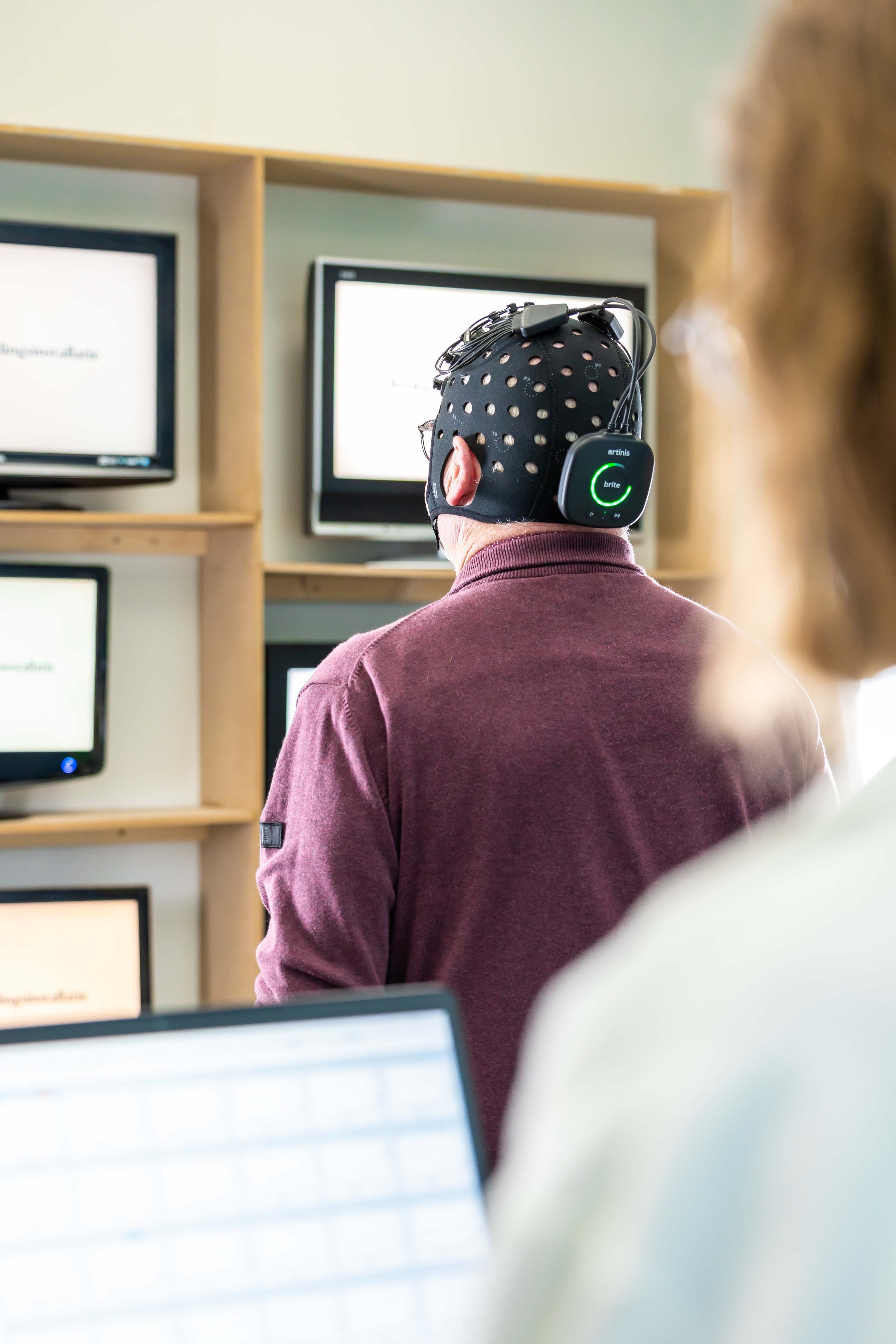
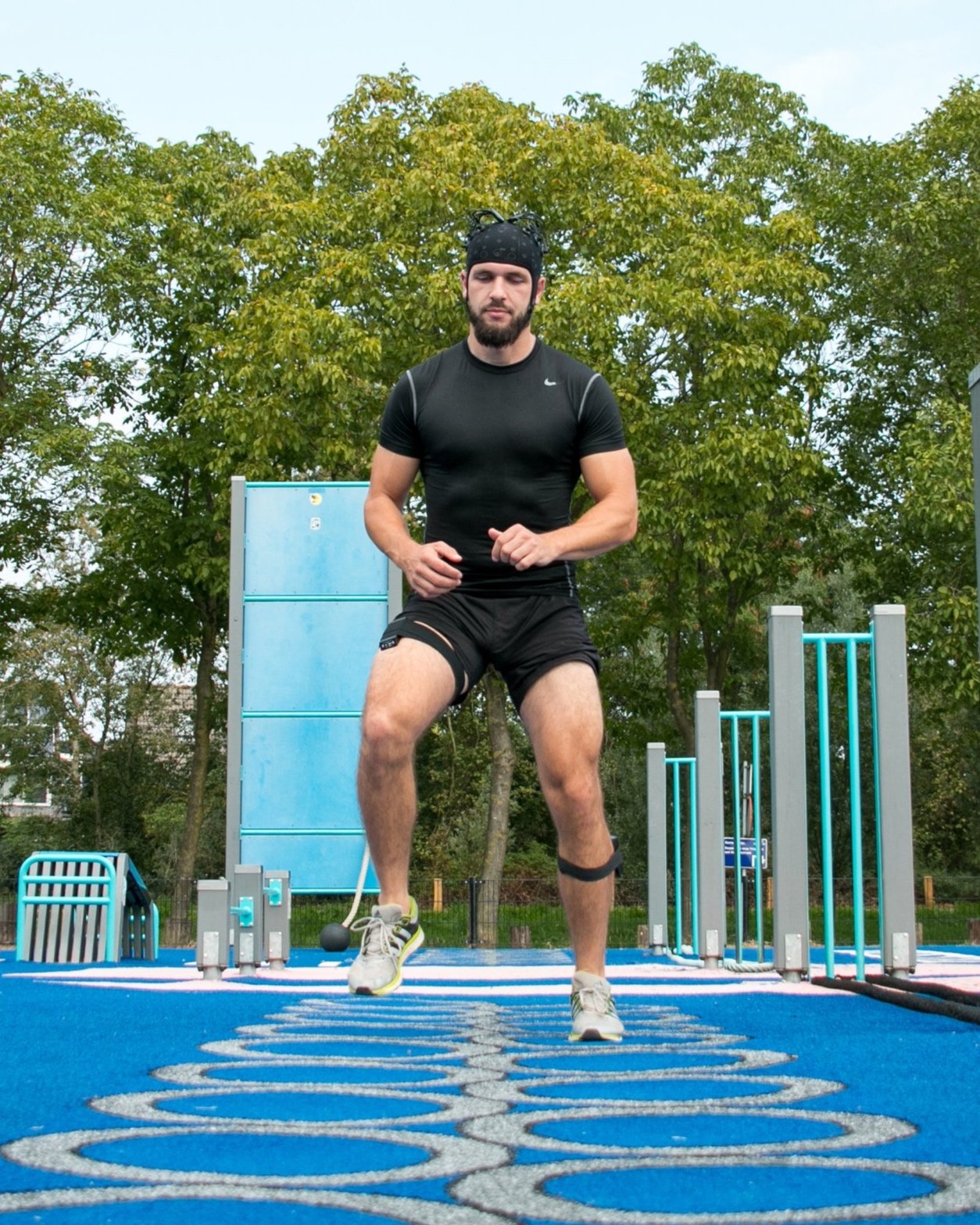
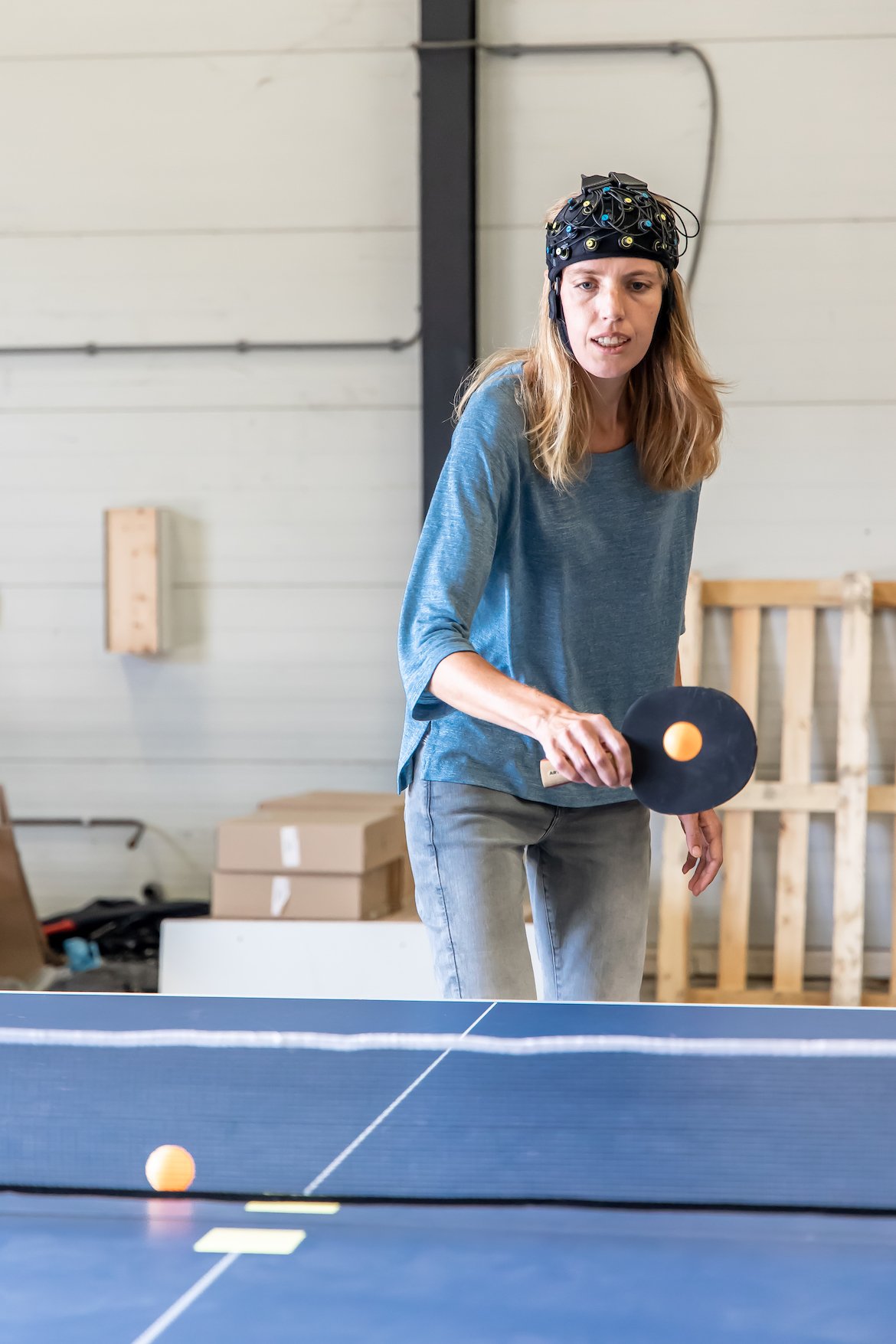
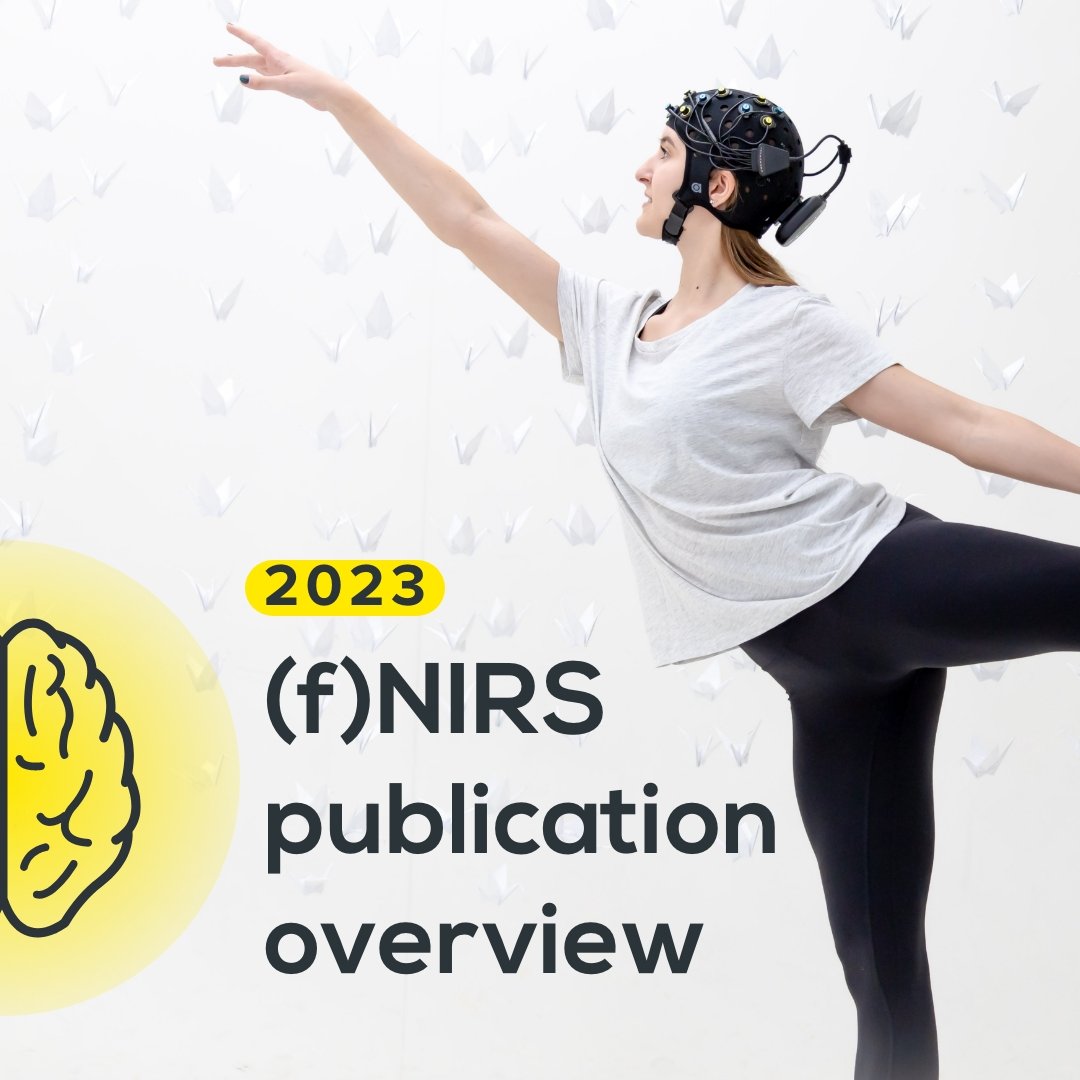
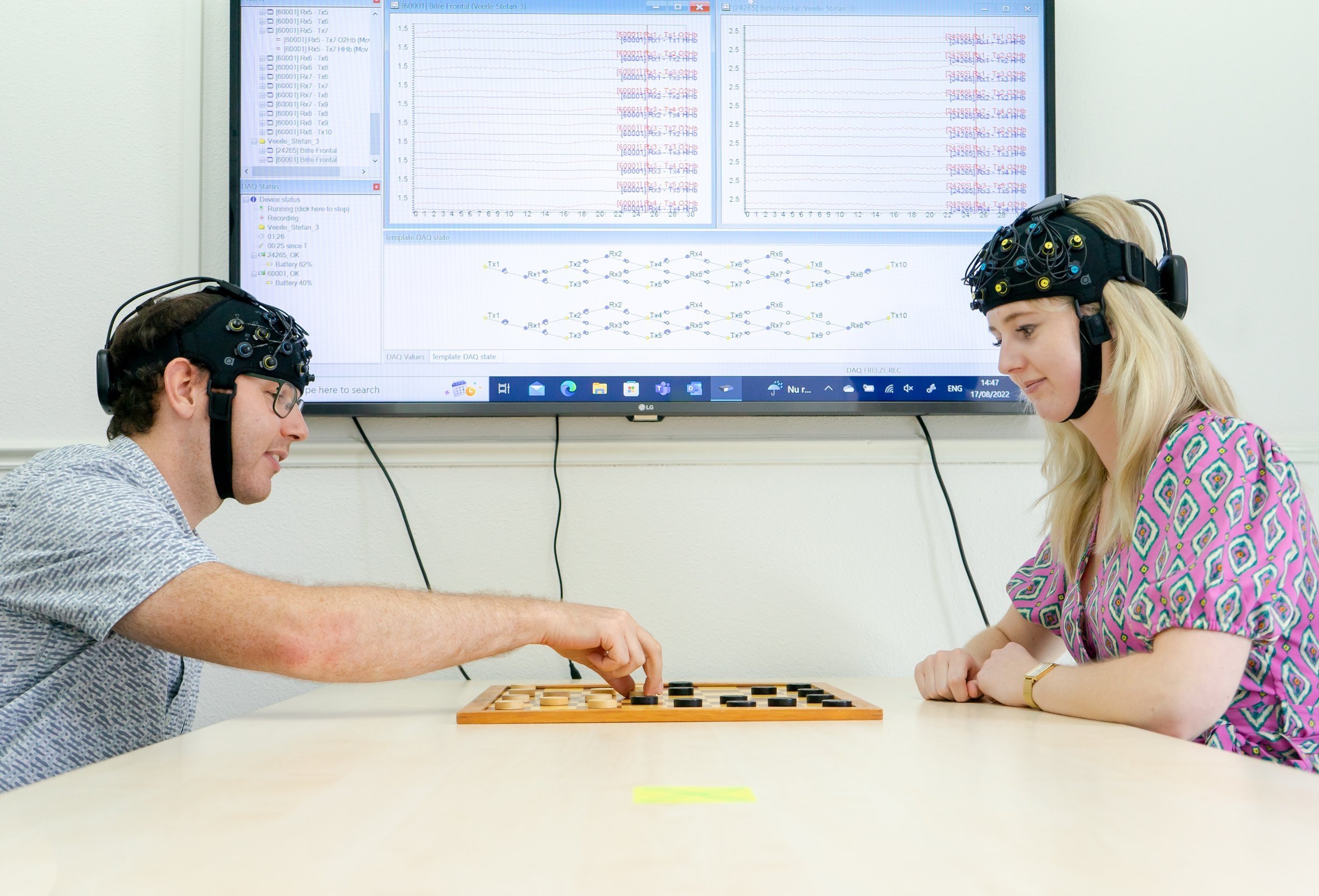
fMRI is widely used and seen as the gold standard in non-invasive in-vivo brain imaging. However, due to its technology, it is comes with certain limitations in participant groups and experiments. fNIRS is portable, easy to use and can be applied in subjects of all ages. Hence, it can provide a valid alternative to fMRI in many applications. In this blogpost we discuss advantages that fNIRS has over fMRI, considerations that should be kept in mind and we highlight literature using fNIRS and fMRI to compare, or get complementary information.